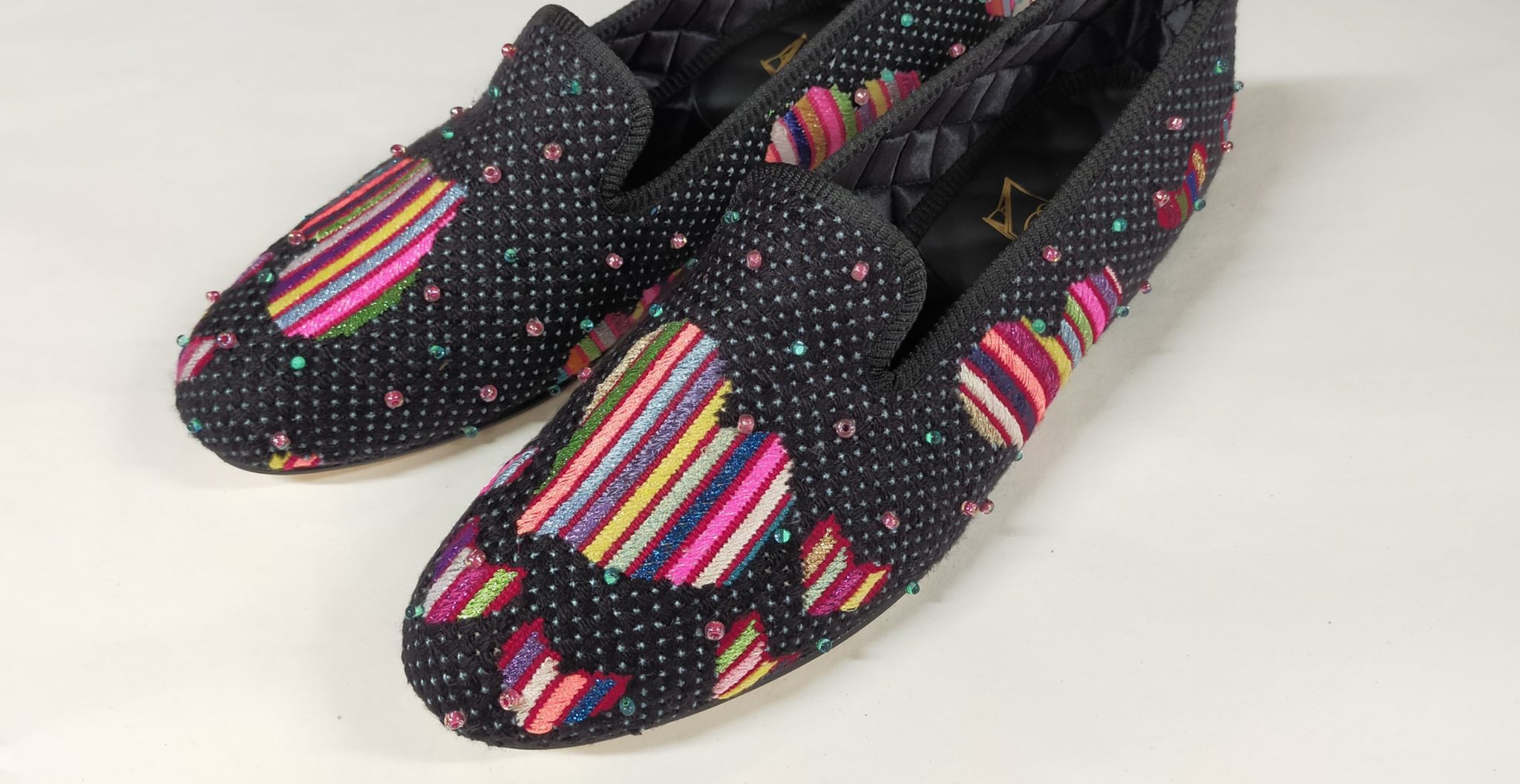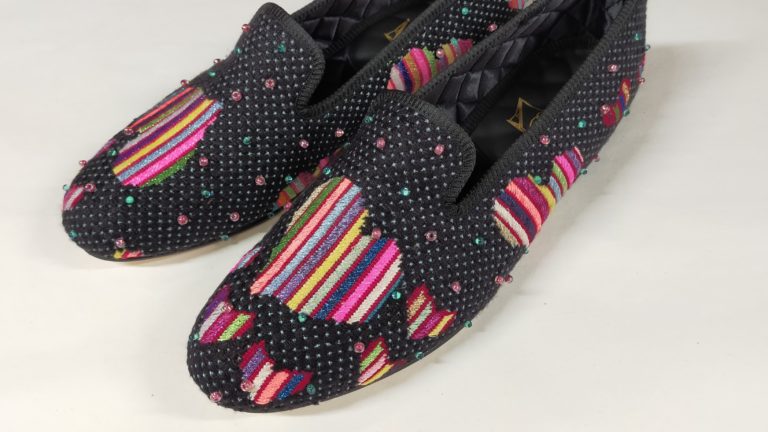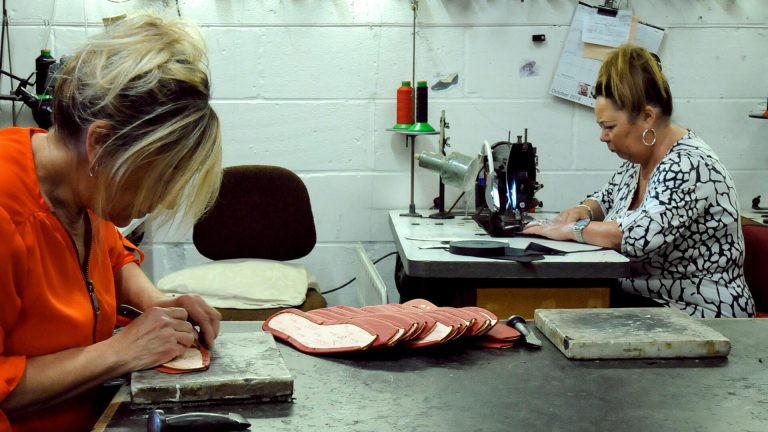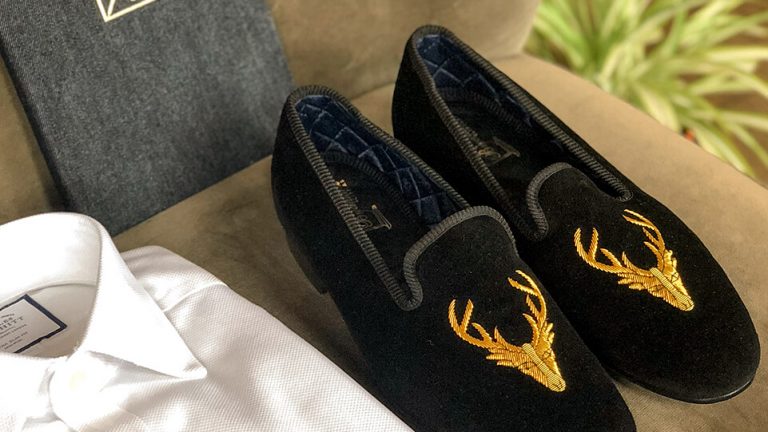A personalised gift for a loved one, a project of love crafted into footwear or an old tapestry found in a loft, a pair of tapestry slippers is a great addition to any shoe collection. We made this guide to help you take the next step once you are interested in a pair.
Where to start
Before starting we suggest you contact us first, either by email or by phone. Depending at what step you are at we can guide you what to do next. We would hate to receive a tapestry that isn’t fit for purpose and therefore have to send it back. Our email is info@broadlandslippers.co.uk
It is important to note that we make up your finished tapestries into slippers and don’t make the tapestry ourselves. We do however have our friend Sarah Barns, also from Norfolk, to assist in starting up. She can supply a canvas with a design of your choice, together with the wools, ready to be stitched. Or she can do the needlework for you (or complete a piece that has been started).
Paper Template
If you know the shoe size required we will provide a paper template of the tapestry we need and send it out to you in the post. If you do know the size needed then we can give guidance for measuring the correct size.
The template will show the certain margins needed in the production of the slipper. This means that some of the design will be lost at the edges to allow for the closing, binding and lasting processes. It is therefore important that when considering your design that any elements you want shown are in prominent central positions away from those edges. The front (vamp) is most visible whilst wearing and more favourable designs running along the side are best suitable to the outside quarters, rather than the inside.
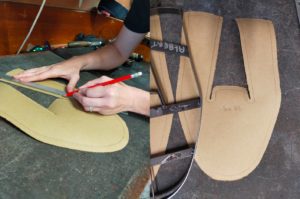
Cutting and marking out the margins by hand
Men’s templates are cut with a ‘straight’ pattern and are same for left and right foot prior to production. For ladies there is a distinct left and right foot, which will be labelled on the template. Regardless It is important to make us aware of which tapestry is for which foot as we don’t want to make mistakes or delay the production time.
Like with any of our other slippers, our tapestry pairs are available in a range of quilted and leather lining options, consider what colour will go best with your tapestry. We also have a range of binding options and can assist in matching colours best we can.
Production
Once we have received your tapestry we will check that it is suitable and if for any reason there is an issue we will let you know. Once we are happy to proceed we can begin production.
First a cotton backer is applied to the back of the template. This gives the tapestry the right thickness and strength for production as well as protecting it from the adhesives and starch solution used in the making process. During this time the tapestry is shaped to fit the pattern required, some tapestries come to us slightly warped after being made under tension, our aim is to correct that before cutting.
Once cut the tapestry goes through the usual process of shoemaking. The backs are closed and the lining is married with the upper and a binding is sewn on.
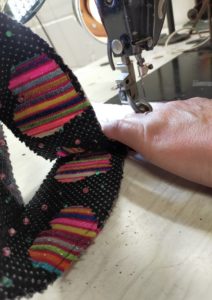
Stitching the backs of the tapestry together
Finally it is lasted by hand with a leather stiffener in the back for support. Once the adhesives have dried it is taken off the last and a matching insole sock is inserted. Then there are final checks and boxing it is ready for shipping. All of our slippers are sent by tracked signed for courier for safe delivery.
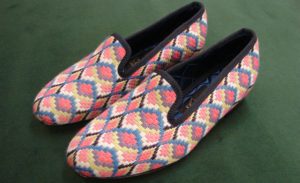
Finished slippers ready to be sent out
